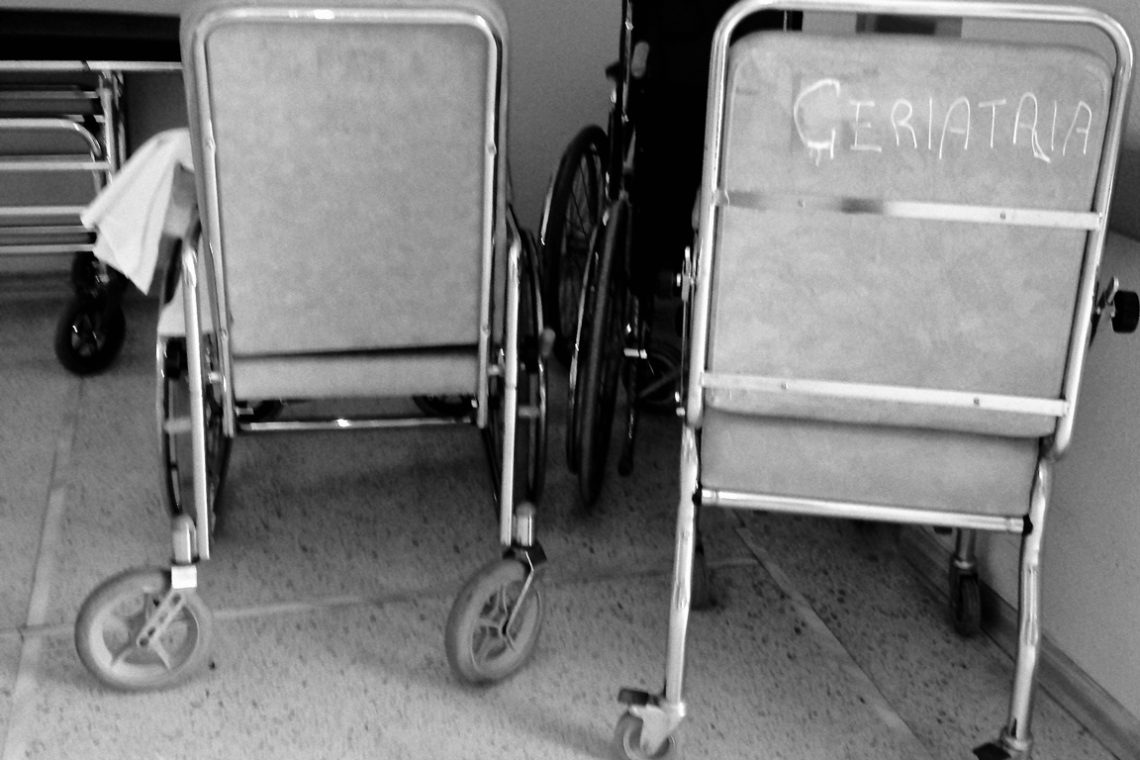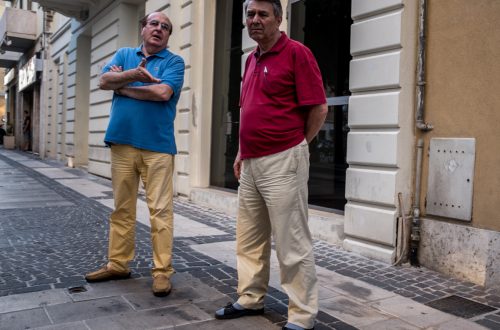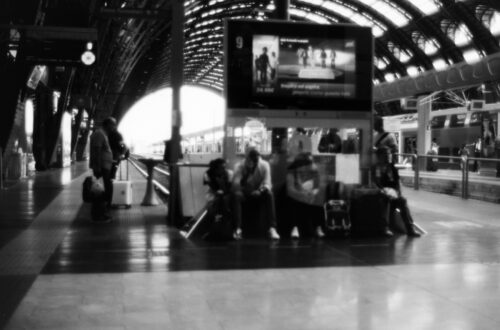
High-Tech Elder Care Tool
When I first saw this image, the irony of the title struck me. High-Tech Elder Care Tool—and yet, before us is a stark black-and-white photograph of a row of battered, utilitarian wheelchairs, one with “Geriatria” scrawled across its back. This is not the glossy, high-tech medical equipment we often see in promotional brochures, but the reality many encounter in underfunded wards and overstretched hospitals.
From a compositional standpoint, the image benefits from its simplicity. The wheelchairs are positioned in a way that leads the viewer’s eye naturally from left to right. The empty, flat wall behind them offers no distraction, instead amplifying the focus on the subject matter. The angle, shooting from slightly behind, denies us any human presence—emphasising absence, neglect, and perhaps even abandonment.
Technically, the black-and-white rendering works in the photograph’s favour. It strips away any potential distractions that colour might have brought, leaving us with a stark tonal range. The light is soft, almost diffuse, revealing the textures of worn metal and aged upholstery without casting harsh shadows. The exposure is well-judged, maintaining detail in both the light floor and the darker wheel components.
There’s a quiet but pointed commentary in this frame. The scrawled word “Geriatria” speaks volumes—both literally and metaphorically—about how elder care is organised, labelled, and, at times, depersonalised. The image is clinical in subject yet carries an undercurrent of melancholy.
As a photograph, it succeeds not because it is visually “beautiful” in the conventional sense, but because it forces a conversation. It makes us consider the state of tools meant to aid those in their most vulnerable years, questioning whether the term care can fully apply when the very objects of assistance speak so loudly of wear and neglect.




